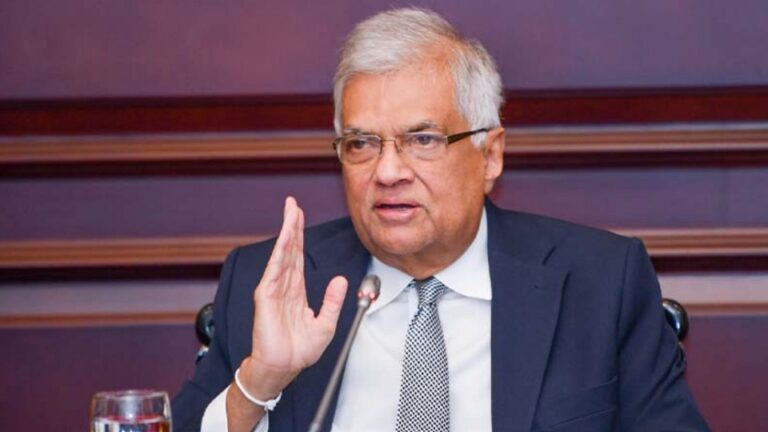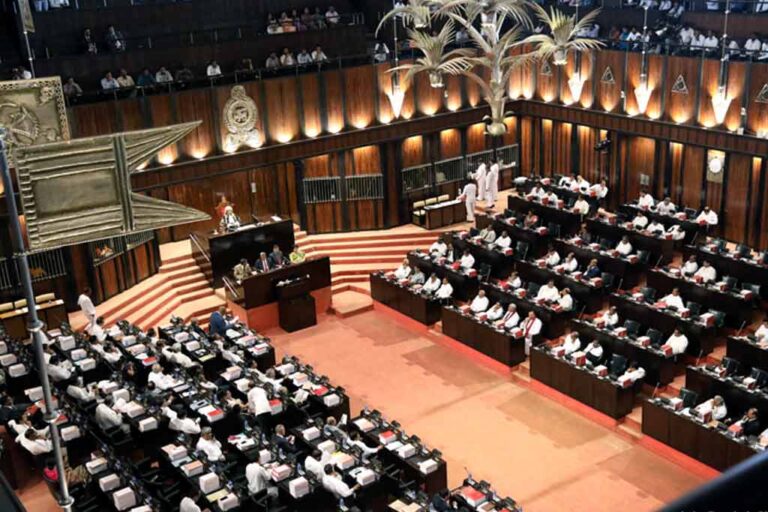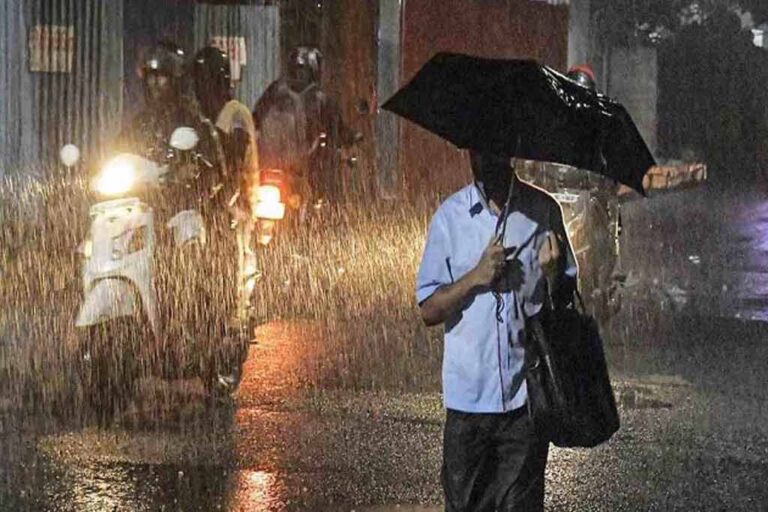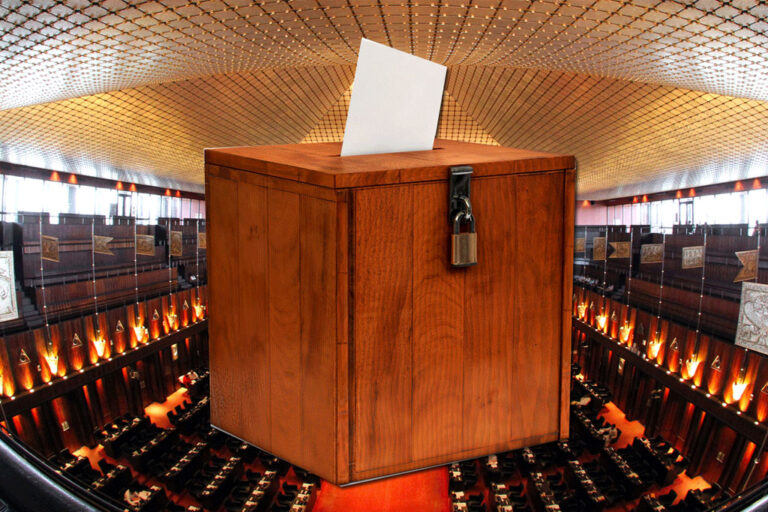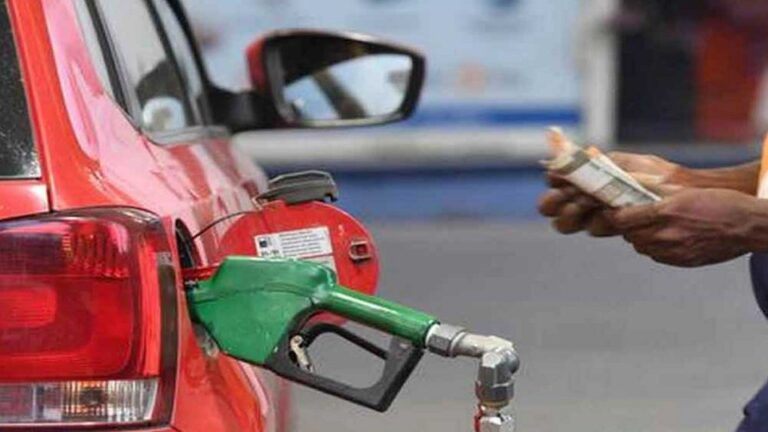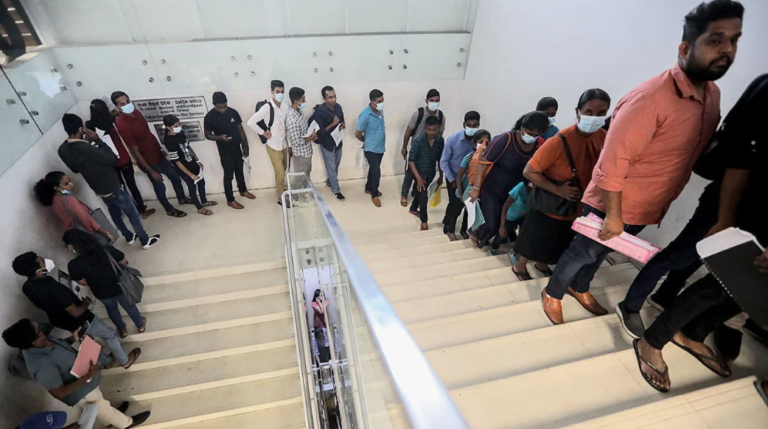PMD: President Ranil Wickremesinghe expressed hope that Sri Lanka will be able to shed its bankruptcy status by September and urged everyone to work collectively to back the Government’s efforts.
The President made this statement while addressing the AGM of the Sri Lanka Institute of Directors (SLID) held at the Cinnamon Grand on the 29th.
“I hope by September that Sri Lanka will be able to shed its bankruptcy status. Whether you are Sinhalese, Tamil, Muslim or any other nationality, no one likes to be called bankrupt. If individually you don’t like it, then collectively why do you want to have this tag on you? So let’s get out of it.” said President Wickremesinghe.
The President also mentioned that a Climate Prosperity Plan was launched in November, which means that more resources are required, partially from the Government and partly from other investments, including private investments. As a result, the President stated that if Sri Lanka abandons the program, the country will immediately forfeit the $700 million that the World Bank is set to provide the country, and the second review will be a failure.
Sri Lanka in future will start playing a more active role in the area of debt and climate resilience and the President expressed confidence that Sri Lanka can make it with what it has got.
The President further said that Sri Lanka has a growth agenda which the Government has placed up for discussion with everyone involved. However, he said that completing the debt restructuring is critical. The President stated that he had already met with members of the Cabinet, Bankers, Chamber of Commerce representatives, and trade union representatives and held discussions.
The President also expressed confidence that not only can Sri Lanka get out of the present crisis, but can look ahead for a far more competitive economy.
He noted that Sri Lanka will be making an application in the next month to join the RCEP, the Regional Comprehensive Economic Partnership that puts Sri Lanka into the whole Southeast East Asian market. As a start off in building a competitive economy, discussion will commence with the EU and India to strengthen trade agreements, the President added.
President Ranil Wickremesinghe further noted;
I hope by September that Sri Lanka will be able to shed its bankruptcy status. Whether you are Sinhalese, Tamil, Muslim or any other nationality, no one likes to be called bankrupt. If individually you don’t like it, then why do you want to have this tag on you collectively? So let’s get out of it.
Last November we presented our Climate Prosperity Plan. Now that means more resources are needed, partly by the Government, partly from other investments, private investments. Then we have to go along with this program. What will happen if you go off this? You’ll immediately lose the $700 million that the World Bank is due to give us. The second review will be a failure.
And I also had the opportunity of being in Paris when President Macron summoned the Global Leaders’ Summit for a New Global Financing Pact, which really looks at one of the issues; the debt and climate resilience. As countries get into debt, resources for climate resilience become less.
How do you have climate resilience and also be able to restructure debt? And where does the money come from? I mean this is such a large amount. I don’t know from where we are going to find the money, but nevertheless we have to find it. So this discussion is on. We are invited because we’ve been successful so far and we made a contribution. And I think Sri Lanka in future will start playing a more active role in this area of debt and climate resilience. I am confident Sri Lanka can make it with what we have got.
We have a growth agenda. We put it up for discussion with you all. But we have to first get through the debt restructuring. I’ve spoken with the Cabinet, we met the Bankers, the Chamber of Commerce representatives and in the afternoon we met the trade unions. We’ve all suffered. We have to have a growth agenda. We have to grow big. But in growing big there must be equity. A few people can’t get rich and others be low income or just make it to the middle income group.
So when we finish the debt restructuring, I will ask the chambers, the professionals, the trade unions, the farmers and others to discuss what our social contract is going to be. If all of us contribute, then all of us must have a share of it. So that’s another discussion that we are planning. This is what is there for the future.
I make one request from you. Go out and tell everyone what this debt restructuring is. Tell them that there is nothing to be frightened and not to attempt to change it. We are in a very delicate situation and we should go ahead.
I am confident that not only can Sri Lanka get out of the present crisis, but we can look ahead for a far more competitive economy.
And we will be making an application in the next month to join the RCEP, the Regional Comprehensive Economic Partnership that puts us into the whole South East and East Asian markets. We spoke to India about upgrading our free trade agreements with them. And later on we’ll talk to the EU about how we are going to deepen our trade agreements with them. So we have to become a competitive economy and this is the start of it.


